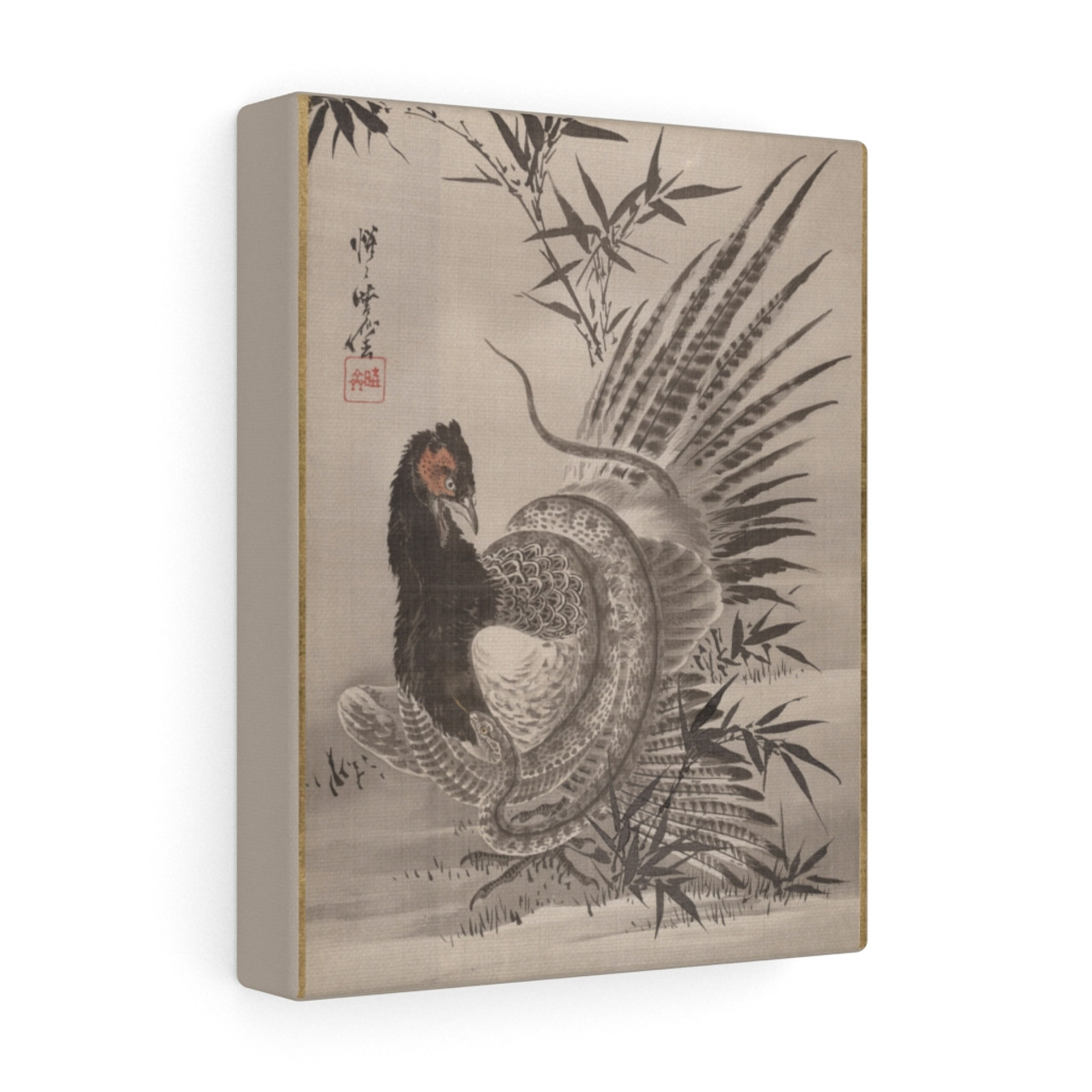Kawanabe Kyosai
kjs on 27th May 2022
Kawanabe Kyosain (1831-1889) was a 19th century Japanese Master painter and caricaturist who bridged popular culture and traditional art. Kawanabe followed in the footsteps of the best-known artist Katsushika Kokusai and is regarded as the most important successor of Kokusai. He lived through the late Edo period and the Meiji period, which saw Japan transforming from a feudal order into a modern state. Kyosain was among Japan’s most important master painters and during his lifetime, he gained a reputation for his independent spirit and witty art. He studied art under the ukiyo-e artist Kuniyoshi at the Tokugawa government-appointed painting school. In his paintings, Kyosain used animal metaphors for some of the primal instincts of humans.
Animal life and Birds, His Speciality
Kyosai received most of his artistic training in the studio of Kano Tohaku. During and after the Meiji Restoration of 1868, Kyosai attained a considerable reputation as a caricaturist. Though he was often imprisoned, he continued to express his opinion in caricature with great popular success. His sketchbooks and a five-volume work on hawks were also published. Originality and humour are obvious in his sketches of goblins and animal life, especially birds, fish and reptiles. Kyosai is famed for his techniques and has left superb works in a host of genres, including Buddhist subjects, birds-and-flower paintings, and images of beautiful women.
Paintings on Frogs, Crows made him successful
Kyosai liked frogs and the first sketch that he did when he was a young child was that of a frog. The animal seems to have remained a favourite subject of his painting ever since. Kyosai liked the animal partly due to its comic potential and he often used frogs to depict the lives of ordinary people. For Kyosai, crows symbolised his success as a painter. His famous painting ‘Crows on a Withered Branch’ won him prizes and was sold to a collector for the hefty sum of 100 yen, which sum was enough to buy 400 bottles of sake. British architect Josiah Conder sent some of Kyosai’s crow paintings back to England in the early 1980s, leading to commissions for similar paintings from around the world. Kyosai was poking fun at then Japanese society that was under the process of Westernisation, through his painting ‘Skeleton Shamisen Player in Top Hat with Dancing Monster’. (Source:Royalacademy.org.uk)
Animals used as Metaphors
Kyosai’s well-known painting ‘Fashionable Picture of the Great Frog Battle (1864) is a metaphor that he used to represent a battle between a clan allied to the Tokugawa fighting the rulers of the Choshu domain, a region of Japan opposed to the Tokugawa government. His painting ‘ Frog School’, depicts a grog teacher giving a class to two frogs sitting on a wooden log, pointing at a lotus-leaf wall chart. In 1872, Japan established a national educational system and opened the first elementary school in Tokyo, teaching western methods including wall charts. His other famous painting ‘Skeleton Shamisen Player in Top-hat with Daning monster (1871-78) shows a Top-hat wearing a skeleton playing a Shamisen to a small Ghoulish character. The Top Hat in the image refers to the arrival of westerners in Japan and their unusual fashions while the skeleton appears to be a visual way of reminding us of our own mortality.
Josiah Konder, His Disciple
In 1881, his ‘Winter Crow on a Withered Branch‘ was awarded the highest prize given at the Second Domestic industrial Exposition. With this award, Kyosai’s reputation as an artist soared. Kyosai’s genius attracted numerous admirers. Most significant amongst them was the British architect Josiah Conder. Conder came to Japan as a foreign government advisor and became Kyosai’s student. They developed especially strong ties of mutual respect and trust. Konder was even present at Kosai’s death. After Kyosai’s death, Conder published Paintings and studies by Kawanabe Kyosai, a comprehensive catalogue of Kyosai’s work which was a major factor leading to Kyosai’s growing fame overseas.
His Fame and His Influence
Many temples, shrines, and restaurants throughout Japan own paintings that Kyosai donated directly to them. It is also known that many people clamoured to acquire his works. His Calligraphy and Paintings Party illustrates the artist’s popularity. Tt shows him deluged by too many commissions which he was unable to fulfil. Kyosai’s Illustrated diary, a record of his daily life, provides a glimpse of his circle of friends and acquaintances, including a number of cultural figures who called on him and with whom he built close ties. (Courtesy: suntory.com)
His Well-known Paintings
Kyosai’s well-known works include ‘Birds and Flowers, ‘Winter Crow on a Withered Branch’, ‘Bishamonten’, ‘Tiger’, ‘Choju Giga’ (Frolicking Animals), ‘Eagle Chasing the Wind God Down a Waterfall’, ‘Emma, the King of Hell and Datsueba, the Old Hag’, ‘Ghost’, ‘Two crows with ‘Crow Gourd’, etc.








